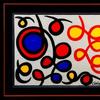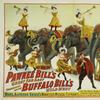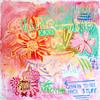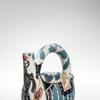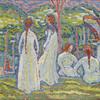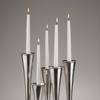Survey of a Storyteller, 'Leyendecker and the Golden Age of American Illustration' Opens at Reynolda House
- WINSTON-SALEM, North Carolina
- /
- August 24, 2019
Reynolda House Museum of American Art will present the work of Joseph Christian (J.C.) Leyendecker, one of the most prolific and sought-after artists of the Golden Age of American Illustration, from Aug. 31 through Dec. 31, 2019. Leyendecker (1894–1951) captivated the public with his striking images and fashionable depictions of handsome men and glamorous women. This will be the museum’s first exhibition focused on illustration and its first to explore the work of an openly gay artist. Reynolda is the opening venue for a national planned tour of “Leyendecker and the Golden Age of American Illustration.”
Between 1896 and 1950, Leyendecker illustrated more than 400 magazine covers for the nation’s trade and general interest publications, including The Saturday Evening Post, for which he created 322 cover paintings. With his instantly identifiable style—“The Leyendecker Look”—he helped shape the image of a nation, producing dozens of enduring icons and creating some of the earliest national advertising brands. Leyendecker was talented at self-promotion and quickly established an easily recognizable style. His approach to his own career influenced an entire generation of younger artists, most notably Norman Rockwell, who observed, “There wasn’t an illustrator in the country who could draw better.” In his commercial work, Leyendecker created the famed Arrow Collar Man, who came to define the fashionable American male of the Roaring Twenties. Leyendecker based the Arrow Collar Man on his favorite model and lifelong partner, Charles Beach.
Born in 1874 in Montabaur, Germany, Leyendecker immigrated to Chicago in 1882 with his parents and three siblings. Showing an early artistic talent, Leyendecker and his youngest brother, F. X., studied at the Art Institute of Chicago before moving to Paris where they developed their distinctive styles. Upon returning to the United States, the brothers entered a publishing renaissance and soon found themselves at its center, New York City. In 1914, they moved into a 14-room house in New Rochelle, New York, along with Charles Beach, for 48 years.
At the turn of the century, illustrators could disseminate original artworks on a national scale for the first time. As publishing technologies advanced to include images, and later colors, the methods of transportation and communication accelerated, allowing publications to be circulated to millions of Americans on a weekly basis. This change revolutionized the way Americans consumed media, from printed text to vibrant representations of the modern world in mastheads, highly illustrated novels and store windows. It was America’s Golden Age of Illustration.
“Leyendecker was a prolific artist, classically trained in Paris and recognized by Norman Rockwell as the most talented illustrator of the age,” explains Phil Archer, deputy director at Reynolda House. “He has been presented in that context—as a commercial illustrator with a broad public appeal. With this exhibition, he will take his rightful place in the long tradition of brilliant artists who have portrayed Americans the way they would like to appear. Jaunty, urbane, and impeccably dressed, Leyendecker’s subjects embodied the youthful independence of the Roaring Twenties.”
“Leyendecker and the Golden Age of American Illustration” includes 42 original paintings and 101 Post covers from the National Museum of American Illustration in Newport, Rhode Island, as well as other materials related to Leyendecker’s work in advertising throughout his five-decade career. The exhibition has particular visual and cultural relevance to the early decades of Reynolda, an era of ball gowns and flapper dresses, tailcoats and tennis whites. Visitors to “Leyendecker and the Golden Age of American Illustration” are invited to experience the complementary exhibition “A Self in the Remaking: Katharine Smith Reynolds Johnston,” on view in the House, which features historic costumes, photographs and manuscripts, many on display for the first time, pulled from the collections in the Reynolda House Archives and the Z. Smith Reynolds Library Special Collections and Archives, Wake Forest University.
“Leyendecker and the Golden Age of American Illustration” will be presented in English and Spanish. Tickets are on sale now at reynoldahouse.org/leyendecker.





